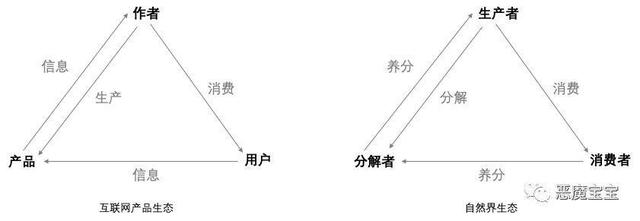python中的换行输出(python3从零学习-5.1.5)
TextWrapper 模块提供了一些快捷函数,以及可以完成所有工作的类 TextWrapper ,我来为大家讲解一下关于python中的换行输出?跟着小编一起来看一看吧!

python中的换行输出
TextWrapper 模块提供了一些快捷函数,以及可以完成所有工作的类 TextWrapper
如果你只是要对一两个文本字符串进行自动换行或填充,快捷函数应该就够用了;否则的话,你应该使用 TextWrapper 的实例来提高效率。
textwrap.wrap(text, width=70, **kwargs)对 text (字符串) 中的单独段落自动换行以使每行长度最多为 width 个字符。 返回由输出行组成的列表,行尾不带换行符。可选的关键字参数对应于 TextWrapper 的实例属性,具体文档见下。 width 默认为 70。请参阅 TextWrapper.wrap() 方法了解有关 wrap() 行为的详细信息。def wrap(text, width=70, **kwargs):
"""Wrap a single paragraph of text, returning a list of wrapped lines.
Reformat the single paragraph in 'text' so it fits in lines of no
more than 'width' columns, and return a list of wrapped lines. By
default, tabs in 'text' are expanded with string.expandtabs(), and
all other whitespace characters (including newline) are converted to
space. See TextWrapper class for available keyword args to customize
wrapping behaviour.
"""
w = TextWrapper(width=width, **kwargs)
return w.wrap(text)
textwrap.fill(text, width=70, **kwargs)def fill(text, width=70, **kwargs): """Fill a single paragraph of text, returning a new string. Reformat the single paragraph in 'text' to fit in lines of no more than 'width' columns, and return a new string containing the entire wrapped paragraph. As with wrap(), tabs are expanded and other whitespace characters converted to space. See TextWrapper class for available keyword args to customize wrapping behaviour. “""
w = TextWrapper(width=width, **kwargs)
return w.fill(text)
对 text 中的单独段落自动换行,并返回一个包含被自动换行段落的单独字符串。 fill() 是以下语句的快捷方式
"\n".join(wrap(text, ...))
特别要说明的是,fill() 接受与 wrap() 完全相同的关键字参数。
textwrap.shorten(text, width, **kwargs)折叠并截短给定的 text 以符合给定的 width。def shorten(text, width, **kwargs): """Collapse and truncate the given text to fit in the given width. The text first has its whitespace collapsed. If it then fits in the *width*, it is returned as is. Otherwise, as many words as possible are joined and then the placeholder is appended::
>>> textwrap.shorten("Hello world!", width=12)
'Hello world!'
>>> textwrap.shorten("Hello world!", width=11)
'Hello [...]'
"""
w = TextWrapper(width=width, max_lines=1, **kwargs)
return w.fill(' '.join(text.strip().split()))
首先将折叠 text 中的空格(所有连续空格替换为单个空格)。 如果结果能适合 width 则将其返回。 否则将丢弃足够数量的末尾单词以使得剩余单词加 placeholder 能适合 width:
>>>
>>> textwrap.shorten("Hello world!", width=12)
'Hello world!'
>>> textwrap.shorten("Hello world!", width=11)
'Hello [...]'
>>> textwrap.shorten("Hello world", width=10, placeholder="...")
'Hello...'
可选的关键字参数对应于 TextWrapper 的实际属性,具体见下文。 请注意文本在被传入 TextWrapper 的 fill() 函数之前会被折叠,因此改变 tabsize, exand_tabs, drop_whitespace 和 replace_whitespace 的值将没有任何效果。
3.4 新版功能.
textwrap.dedent(text)移除 text 中每一行的任何相同前缀空白符。这可以用来清除三重引号字符串行左侧空格,而仍然在源码中显示为缩进格式。请注意制表符和空格符都被视为是空白符,但它们并不相等:以下两行 " hello" 和 "\thello" 不会被视为具有相同的前缀空白符。例如def test(): # end first line with \ to avoid the empty line! s = '''\ hello world ''' print(repr(s)) # prints ' hello\n world\n ' print(repr(dedent(s))) # prints 'hello\n world\n'
textwrap.indent(text, prefix, predicate=None)将 prefix 添加到 text 中选定行的开头。通过调用 text.splitlines(True) 来对行进行拆分。默认情况下,prefix 会被添加到所有不是只由空白符(包括任何行结束符)组成的行。例如>>>>>> s = 'hello\n\n \nworld' >>> indent(s, ' ') ' hello\n\n \n world'
可选的 predicate 参数可用来控制哪些行要缩进。 例如,可以很容易地为空行或只有空白符的行添加 prefix:
>>>
>>> print(indent(s, ' ', lambda line: True))
hello
world
3.3 新版功能.
wrap(), fill() 和 shorten() 的作用方式为创建一个 TextWrapper 实例并在其上调用单个方法。 该实例不会被重用,因此对于要使用 wrap() 和/或 fill() 来处理许多文本字符串的应用来说,创建你自己的 TextWrapper 对象可能会更有效率。
文本最好在空白符位置自动换行,包括带连字符单词的连字符之后;长单词仅在必要时会被拆分,除非 TextWrapper.break_long_words 被设为假值。
class textwrap.TextWrapper(**kwargs)TextWrapper 构造器接受多个可选的关键字参数。 每个关键字参数对应一个实例属性,比如说wrapper = TextWrapper(initial_indent="* ")
就相当于
wrapper = TextWrapper()
wrapper.initial_indent = "* "
你可以多次重用相同的 TextWrapper 对象,并且你也可以在使用期间通过直接向实例属性赋值来修改它的任何选项。
TextWrapper 的实例属性(以及构造器的关键字参数)如下所示:
width(默认: 70) 自动换行的最大行长度。 只要输入文本中没有长于 width 的单个单词,TextWrapper 就能保证没有长于 width 个字符的输出行。expand_tabs(默认: True) 如果为真值,则 text 中所有的制表符将使用 text 的 expandtabs() 方法扩展为空格符。tabsize(默认: 8) 如果 expand_tabs 为真值,则 text 中所有的制表符将扩展为零个或多个空格,具体取决于当前列位置和给定的制表宽度。3.3 新版功能.replace_whitespace(default: True) 如果为真值,在制表符扩展之后、自动换行之前,wrap() 方法将把每个空白字符都替换为单个空格。 会被替换的空白字符如下:制表,换行,垂直制表,进纸和回车 ('\t\n\v\f\r')。注解如果 expand_tabs 为假值且 replace_whitespace 为真值,每个制表符将被替换为单个空格,这与制表符扩展是 不 一样的。注解如果 replace_whitespace 为假值,在一行的中间有可能出现换行符并导致怪异的输出。 因此,文本应当(使用 str.splitlines() 或类似方法)拆分为段落并分别进行自动换行。drop_whitespace(默认: True) 如果为真值,每一行开头和末尾的空白字符(在包装之后、缩进之前)会被丢弃。 但是段落开头的空白字符如果后面不带任何非空白字符则不会被丢弃。 如果被丢弃的空白字符占据了一个整行,则该整行将被丢弃。initial_indent(默认: '') 将被添加到被自动换行输出内容的第一行的字符串。 其长度会被计入第一行的长度。 空字符串不会被缩进。subsequent_indent(default: '') 将被添加到被自动换行输出内容除第一行外的所有行的字符串。 其长度会被计入除行一行外的所有行的长度。fix_sentence_endings(默认: False) 如果为真值,TextWrapper 将尝试检测句子结尾并确保句子间总是以恰好两个空格符分隔。 对于使用等宽字体的文本来说通常都需要这样。 但是,句子检测算法并不完美:它假定句子结尾是一个小写字母加字符 '.', '!' 或 '?' 中的一个,并可能带有字符 '"' 或 "'",最后以一个空格结束。 此算法的问题之一是它无法区分以下文本中的 “Dr.”[...] Dr. Frankenstein's monster [...]
和以下文本中的 “Spot.”
[...] See Spot. See Spot run [...]
fix_sentence_endings 默认为假值。
Since the sentence detection algorithm relies on string.lowercase for the definition of “lowercase letter,” and a convention of using two spaces after a period to separate sentences on the same line, it is specific to English-language texts.
break_long_words(默认: True)
如果为真值,则长度超过 width 的单词将被分开以保证行的长度不会超过 width。 如果为假值,超长单词不会被分开,因而某些行的长度可能会超过 width。 (超长单词将被单独作为一行,以尽量减少超出 width 的情况。)
break_on_hyphens(默认: True) 如果为真值,将根据英语的惯例首选在空白符和复合词的连字符之后自动换行。 如果为假值,则只有空白符会被视为合适的潜在断行位置,但如果你确实不希望出现分开的单词则你必须将 break_long_words 设为假值。 之前版本的默认行为总是允许分开带有连字符的单词。
max_lines(默认: None)
如果不为 None,则输出内容将最多包含 max_lines 行,并使 placeholder 出现在输出内容的末尾。3.4 新版功能.
placeholder(默认: ' [...]')
该文本将在输出文本被截短时出现在文本末尾。
3.4 新版功能.
TextWrapper 还提供了一些公有方法,类似于模块层级的便捷函数:wrap(text)对 text (字符串) 中的单独段落自动换行以使每行长度最多为 width 个字符。 所有自动换行选项均获取自 TextWrapper 实例的实例属性。 返回由输出行组成的列表,行尾不带换行符。 如果自动换行输出结果没有任何内容,则返回空列表。fill(text)对 text 中的单独段落自动换行并返回包含被自动换行段落的单独字符串。
,免责声明:本文仅代表文章作者的个人观点,与本站无关。其原创性、真实性以及文中陈述文字和内容未经本站证实,对本文以及其中全部或者部分内容文字的真实性、完整性和原创性本站不作任何保证或承诺,请读者仅作参考,并自行核实相关内容。文章投诉邮箱:anhduc.ph@yahoo.com






